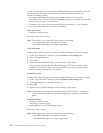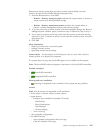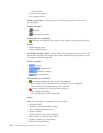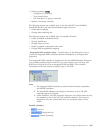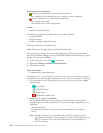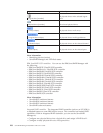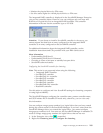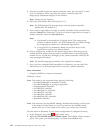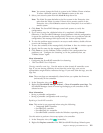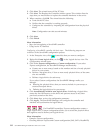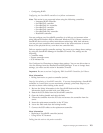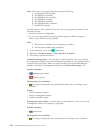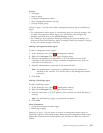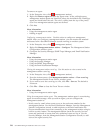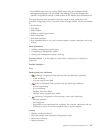
3. Enter the controller name and partner controller name. You can specify a name
up to 12 characters. When you enter the partner controller name, the
merge-group information displays in the window.
Note: Names are case sensitive.
4. Select the SCSI initiator IDs which can be 6 or 7.
Note: The SCSI initiator IDs must be unique from the partner controller
initiator IDs. The default is 7.
5. If you want a logical drive to merge to another controller if this controller fails,
select the Shared box. Otherwise, if you do not want a logical drive to merge to
another controller, select the Non-shared box.
Note:
a. Non-shared is the default for all logical drives. The merge-group
number is defined as [200 + the SCSI initiator ID]. You cannot change
the merge-group number for a non-shared logical drive.
b. If a logical drive is defined as shared, all physical drives in the
logical drive must be on a shared channel.
6.
Enter a merge-group number for the shared logical drive. This merge-group
number must be unique from the partner controller (that is, the merge-group
number for any logical drive belonging to the partner controller cannot be the
same merge-group number).
Note: The default merge-group number is the logical-drive number.
7. Once you have configured both controllers for clustering, you can click View
shared drives to view the physical drives owned by a partner controller.
More information
v Using ServeRAID in a cluster environment
Validating
a cluster:
Note: This action is not supported when using the following:
v ServeRAID Manager in bootable-CD mode
v ServeRAID Manager as a plug-in application
v Integrated RAID controller
v ServeRAID-5i controller
v ServeRAID-6i/6i+ controller
v ServeRAID-7t controller
v ServeRAID-8i controller
v ServeRAID-8k/8k-l controller
v HostRAID controller
Note:
You must have the ServeRAID Manager installed and running on all servers
in the cluster for this feature to work. You must run the Validate cluster
feature from one of two nodes in the cluster; you cannot run it remotely.
Use this action to determine if your cluster configuration is configured correctly.
1. In the Enterprise view, click
(local system only).
2. Right-click ServeRAID actions → Validate cluster . The Validate Cluster window
opens. The system you selected in step 1 is listed in the Node A box.
110 ServeRAID Manager Installation and User's Guide



